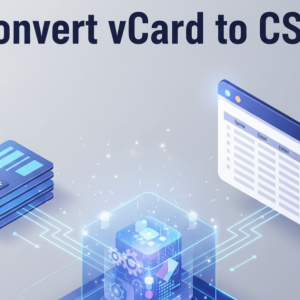In today’s fast-paced digital ecosystem, brands can no longer rely on intuition or broad-reach campaigns to drive results. Marketers are under pressure to deliver measurable outcomes, justify budgets, and scale predictable growth engines. This is where a well-structured approach to building a high-ROI Performance Marketing Strategy becomes critical. Unlike traditional marketing, which often focuses on long-term branding and impressions, performance-driven campaigns demand accountability at every stage of the funnel. To succeed, marketers must blend data insights, audience understanding, experimentation, creative excellence, and technology into a cohesive plan.
A modern performance-driven approach is not just about running ads; it is a complete growth framework. Brands need to align their goals with precise metrics, understand user behaviors, optimize campaigns continuously, and adapt quickly to market shifts. With rising acquisition costs and increasing competition on platforms such as Meta, Google, TikTok, and programmatic networks, the brands that win are those that treat performance marketing as a disciplined, iterative system. This article breaks down every core component required to build a sustainable and high-ROI structure that elevates a brand’s acquisition, retention, and overall digital impact.
Understanding the Foundation of a High-ROI Framework
To build a strong foundation, brands first need clarity on what success actually looks like. Clear business objectives guide the entire process, from selecting ad channels to shaping messaging and optimizing conversion flows. Without defining desired outcomes and timelines, marketers risk “spray and pray” tactics. A powerful framework arises when teams understand how each campaign element ties back to business revenue, profit, and growth targets.
Brands must also master customer insights. A successful growth engine begins with understanding who the customers are, why they act the way they do, and what motivates their decisions. Data tools, analytics platforms, and audience research techniques help uncover behavioral patterns that shape targeting, creative themes, and campaign sequencing. This customer-first approach ensures that messaging resonates, reduces wasted ad spend, and builds stronger campaign performance from the start.
Setting Clear Goals and KPIs for Scalable Results
To achieve strong ROI, marketers must define goals that align with the brand’s broader objectives. Clear KPIs prevent misalignment between campaigns and business outcomes. The right KPIs differ depending on whether the brand focuses on awareness, acquisition, engagement, or retention. For high-ROI campaigns, acquisition and cost-efficiency metrics typically take center stage.
Executing strategically requires mapping KPIs to each stage of the funnel. Awareness metrics may include reach and view-through rates. Mid-funnel actions rely on engagement rates, click-through rates, and landing page interactions. Bottom-funnel performance is measured through cost per acquisition, return on ad spend, and lifetime value. By mapping KPIs across the journey, marketers ensure that the entire campaign remains optimized for measurable results.
Building Data-Driven Audience Targeting
Audience targeting is one of the most influential factors in performance marketing success. Brands that rely on guesswork often waste budgets on the wrong audiences, while data-driven organizations pinpoint the right users with precision. Analytics platforms, CRM insights, social media behavior, and browsing patterns help develop rich audience segments.
From lookalike modeling to custom intent audiences, each segment offers unique opportunities. High-ROI performance marketing thrives on experimentation with various audience clusters. Testing different combinations and monitoring variations in cost and engagement helps identify which segments deliver the best value. Over time, brands can refine their models and allocate budgets more efficiently.
Crafting High-Converting Creative and Messaging
Creative execution is often the deciding factor between an average campaign and a top-performing one. Visuals, copy, and ad formats must communicate the value proposition instantly and persuasively. Creatives should be aligned with audience expectations and tailored to the specific stage of the funnel. Awareness ads typically emphasize storytelling and emotional appeal, while bottom-funnel ads focus on urgency, benefits, and strong calls to action.
Successful brands invest in continuous creative testing. Variations in headlines, visuals, hooks, and formats allow marketers to identify winning combinations. By understanding which creative elements drive the strongest engagement and conversions, brands can scale them effectively. This approach enhances long-term results by combining audience-aligned messaging with data-validated creative decisions.
Choosing and Optimizing High-ROI Channels
Selecting the right channels is a major component of building a profitable system. Each channel contributes differently to the funnel, and brands need to understand platform strengths before allocating budgets. Google Search captures high-intent traffic, while social platforms like Meta and TikTok inspire discovery and engagement. Programmatic networks provide broad reach, and email or SMS nurture existing customers.
A high-ROI system requires constant optimization. Marketers refine bids, shift budgets between platforms, adjust creative assets, and fine-tune targeting based on performance insights. The process is continuous, not static. Proper tracking, attribution, and analytics allow marketers to understand where conversions originate and which channels deliver the strongest long-term outcomes.
Developing a Seamless Conversion Experience
Even the strongest ad campaigns fail if the landing page or purchasing journey is weak. Conversion flows should be smooth, fast, and intuitive. Landing pages must reinforce ad messaging, highlight value, showcase social proof, and guide users toward the desired action. Any friction, such as confusing navigation or slow load time, reduces ROI significantly.
Marketers need to test variations of landing pages to understand which messages, layouts, and elements drive more conversions. Optimizing conversion rate is one of the most impactful ways to increase profit without raising ad spend. A strong conversion system turns paid traffic into revenue efficiently and consistently.
Executing a Continuous Optimization Cycle
High-ROI performance systems rely on ongoing testing, learning, and scaling. Campaign performance changes based on seasonality, audience fatigue, market trends, and platform algorithm updates. Continuous optimization ensures that campaigns evolve and stay profitable.
Marketers should analyze daily and weekly data to identify opportunities and inefficiencies. Key factors such as ad frequency, CPC trends, conversion drop-offs, and creative fatigue offer signals for improvement. A structured optimization cycle enables brands to scale what works, pause what doesn’t, and maintain strong performance at the lowest possible cost.
Leveraging Technology, AI, and Automation
Technology plays a transformative role in modern performance marketing. AI-driven bidding, automated optimization, dynamic creative testing, and predictive analytics help marketers operate more efficiently. Automation tools assist with audience segmentation, ad placement, retargeting cycles, and lifecycle marketing workflows. These tools reduce manual workload and deliver smarter insights that drive ROI.
Many marketers even enhance their technical skills through advanced training, such as a performance marketing course that deepens understanding of tools, platforms, and data systems. Learning how to integrate these skills with practical execution accelerates results and builds long-term expertise.
Scaling the Strategy for Long-Term Growth
Scaling begins once the system is consistently profitable. Brands must identify proven audiences, winning creatives, and high-performing channels before increasing budgets. Scaling also involves expanding to new platforms, testing new funnels, launching fresh creative variations, and broadening retargeting pools.
Brands that scale effectively maintain a balance between maximizing growth and protecting ROI. The strongest performance engines rely on a combination of disciplined experimentation, optimized systems, diversified channels, and a deep commitment to data-driven decisions.
Conclusion
Building a high-ROI framework requires clarity, strategy, and a structured approach. A strong Performance Marketing Strategy integrates data, creative excellence, precision targeting, optimized funnels, and continuous improvement. By understanding how each element contributes to growth, marketers can create systems that deliver predictable, scalable, and profitable results. A well-executed Performance Marketing Strategy is not a one-time effort but an ongoing cycle of testing, learning, and optimization. The brands that commit to this discipline are the ones that achieve sustainable success in an increasingly competitive digital landscape.








